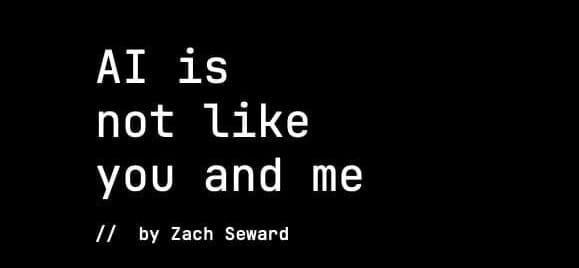- Monkey Wrench
- Posts
- Let's get this party started
Let's get this party started
Welcome to the first issue of Monkey Wrench, a newsletter that empowers you to feel good about technology.

Welcome to Monkey Wrench.
Last October, I gave a TEDx talk where I encouraged people to change their perspective on technology. After more than a decade of getting paid to build tech solutions to solve people’s problems, I’ve come to a bleak conclusion:
Most people hate technology.
People hate downloading apps from the app store. They groan when they have to use one of those one-time codes in order to sign into something. They feel that there should be a way to do [insert simple task here] but can’t be bothered to figure out how to do it.
Me, on the other hand? I think tech is pretty dang cool.
Of course, I’m the kind of guy that spent my childhood building games for my TI-83+ graphing calculator and building websites dedicated to The Simpsons and Animorphs, so maybe my opinion is a little biased.
So what’s a guy to do who wants to get others to see the cool stuff that tech can do?
Start a newsletter, of course!
So what do I hope you get out of this newsletter? Well, a few things.
Optimism
First, I want you to leave each newsletter feeling a little more optimistic about living in an age with unprecedented technology at your hands.
That phone you have in your pocket? It has more than 100,000 times the computing power than the Apollo 11 team had at their disposal. We have large language models who can help us draw incredible conclusions from any text you can throw at it. We can pinpoint your location anywhere on this planet in real time to within a centimeter.
This is all supremely cool, and every day, we discover new technological advances that can make a significant impact. I hope the content in this newsletter leaves you with the same sense of awe that I experience daily.
Experimentation
Second, I want you to stop being so afraid of experimenting with technology.
To me, “technology” is just a fancy word for “tools”.
Clever marketing campaigns condition us to believe that technology is simply magic, capable of doing everything flawlessly with zero effort on our part.
If you’ve never wielded a jackhammer before, you probably would want to watch a YouTube video to get some idea of how it worked before you started chiseling away at your concrete stairs.
A new HomePod is a lot like a jackhammer. It doesn’t take long to understand how either works, their limitations, and how to use them effectively.
It doesn’t take much to learn what the right words are to shout at Siri to play the playlist you want, or how to use AI tools like ChatGPT to take away the crappy parts of your job.
It just takes a little curiosity and persistence.
And maybe it takes a friendly nerd who can share some of the findings he’s learned over the past few decades to give you a nudge to give it a try again.
I didn’t name this newsletter Monkey Wrench because I’m a big Foo Fighters fan. I did it because I’m a huge Foo Fighters fan I like the idea of this newsletter being a tool that encourages you to try out new tools.
Tech’s impact on society
Finally, I want to use this newsletter as a space where I can share the ways I see technology impacting our society.
There’s endless content discussing how AI will disrupt economies and displace workers. Social media continues to erode our attention spans and worsen mental health issues.
This might seem like a contradiction of my first desire to leave you with optimism, but my theory is this: technology is neither good nor bad. It’s all about how you use it and how others use it on you.
The more you are aware of how people are using technology to influence your life, the more you can decide how exactly technology fits into the vision for your life.
So if all of that sounds interesting to you, then thank you for subscribing. You’re in the right place.
I do have one small favor to ask: if you know any other people in your life who like learning new things and might also like this sort of content, send them the link to subscribe!
Alright, let’s get to the links!
Stuff worth reading:
Aristotle, who had a few things to say about human nature, once declared, "The greatest thing by far is to have a command of metaphor," but academics studying the personification of tech have long observed that metaphor can just as easily command us. Metaphors shape how we think about a new technology, how we feel about it, what we expect of it, and ultimately how we use it.
I love metaphors. I gotta reflect on this idea a bit more.
There is something kind of pathological going on here. One of the most exciting advances in computer science ever achieved, with so many promising uses, and we can't think beyond the most obvious, least useful application? What, because we want to see ourselves in this technology?
Meanwhile, we are under-investing in more precise, high-value applications of LLMs that treat generative A.I. models not as people but as tools. A powerful wrench to create sense out of unstructured prose. The glue of an application handling messy, real-word data. Or a drafting table for creative brainstorming, where a little randomness is an asset not a liability. If there's a metaphor to be found in today's AI, you're most likely to find it on a workbench.
Bingo! AI is a tool, not a person.
The other day, I made a joke on LinkedIn about the easiest way for me to spot a social media post that was written with generative AI: the phrase “Exciting News!” alongside one of these emojis: 🚀, 🎉, or 🚨.
It’s not that everyone who uses those phrases or emojis is guilty of using ChatGPT. After all, these models are only parroting back the average of the data they’ve been trained on, so certainly you’d expect a lot of people using them in real life.
I think a better metaphor is how a talented woodworker would be able to spot rookie mistakes in a novice’s first attempt at a table.
And there I go using metaphors again!
Anyone who regularly reads my blog knows that I’ve been on a kick of sharing articles that essentially boil down to “the internet sucks these days.”
But I should stop framing these links as a “here’s why what we have right now sucks” because really… the internet doesn’t suck right now. Or rather, it doesn’t have to.
I really enjoyed Molly White’s metaphor about gardens (metaphors metaphors metaphors!). I’ve been tending to my own garden on my own site for more than a decade, and I’ve kept up patches of turf on the web since the mid 90s.
I like having a virtual presence, a place where others can see what I’m all about and choose to interact with me or not.
What resonated most with me was Molly’s observation that the internet became less fun when we all started using it for work. I couldn’t agree more.
Somewhat related: this past weekend, I decided to finally do something about my IRL piece of land. You see, most of my backyard is now just dirt. My front yard is mostly weeds dotted by patches of grass.
My back patio is in literal shambles, chunks of broken patio paver strewn around the yard.
The screens on my windows are either broken, bent, or missing altogether.
The cool Govee lights I installed last fall no longer stick to my overhang, so they dangle down, the weight of which causing the next Govee lights in the chain to also pull away over time.
It’s frustrating.
This past weekend, I went to the hardware store and spent way too much money on grass seed. It felt incredibly rewarding to do the hard work of ripping up the old junk and trying to build something new.
It felt like a sign for me to log off a bit more often and tend to reality.
But that’s not to say my digital gardens are going away anytime soon. It’s the whole reason I’m writing what you’re reading right now: I think technology is so cool, and we could all use a reminder of that sometimes.
We also could use a friend to help us figure out how to use it right.
Much like I could use a friend right now to help me figure out how to replace my busted up patio.
The baggage around nuclear power largely stems from an inaccurate, almost mystical notion of how it works. In reality, contemporary nuclear power plants boast exceptional safety records and produce astonishingly minimal waste relative to their immense energy output. Additionally, their compact footprint allows for versatile placement: They don’t require areas with ample sun or wind, are dispatchable when needed, and realistically could be placed on-site at particularly important facilities as a steady supply of clean power.
But if we’re going to normalize nuclear power as a reliable and well-understood energy source, it’s essential to understand how we’ve ended up in our current situation. It’s also important to recognize that although much of this post focuses on large-scale nuclear fission reactors — because that’s what have been delivering civilian power for the past several decades — smaller, more modular reactors will likely play a major role going forward, perhaps as a means to address more local, and even hyper-local, energy needs.
You should probably take this entire article with a grain of salt because it was written by the venture capital firm Andreessen Horowitz, a group I am sure I’ll address in a future newsletter when discussing late stage capitalism, but I can give credit where it’s due: I did learn a lot about the history of nuclear power.
In particular, I enjoyed learning what a nuclear meltdown is and why, thanks to evolutions in technology, those are unlikely to ever happen again.
There were also plenty of phrases used (carbon rod, Diablo Canyon) which sparked my inner Simpsons nerd.
The attachment works by reducing high frequency noises so it sounds more like “wind noise” rather than a loud, high pitched whistle.
This is the sort of incremental, quality of life improvement invention that makes me so glad to be alive right now.
That’s it for this first edition of Monkey Wrench! As I hit publish, there are 61 of you receiving this, and I am extremely grateful for each and every one of you. If there’s anything you’d like to see more of in the next letter, reply to this email and let’s chat!
Oh, and I’m still working on the color palette here. I came across a website called Pokémon Palettes that provides hex values for the sprites used in the original Game Boy games, so I tried my hand at adapting the Gengar palette here, but it kinda looks bad… any feedback on that front would be appreciated. 😅



